
— Sam Charlwood
Few vehicles have fit the ‘automotive disruptor’ billing better than the BYD Shark 6 in 2025. In a dual-cab ute segment where buyers are fiercely loyal to their respective brands – tribal, even – the Chinese upstart has managed to steal sales from legacy players and, with its plug-in hybrid tech, help kick-start a new genre of ute.
But herein lies the key question with the BYD Shark 6: for all its tech, specification and value, does it deliver on its core charter of being a ute? The answer is a mixed bag.
The value equation is well and truly in favour of the new BYD Shark 6.
At $57,900 before on-road costs, it comfortably undercuts every plug-in hybrid ute currently on the Australian scene (admittedly a bourgeoning segment). For instance, the rivalling GWM Cannon Alpha PHEV starts at $59,990 plus on-road costs, while the Ford Ranger PHEV line-up starts at $71,990 plus on-road costs.
Buoying the Shark’s case even further is its solitary grade: there’s only one to choose from, and it’s a veritable burger with the lot.
The BYD Shark 6 has a strong digital veneer where its drivetrain and technology are concerned, and the interior is no different.
The cabin feels decidedly design-orientated and youthful compared to the Tupperware plastic-lined interiors of some traditional rivals. Quality surface treatments, contrasting (and potentially polarising) orange upholstery stitching, a bevy of digital screens, and comfortable seats up front.
The Shark hits its marks where it matters, too, with ample space across both rows of seating, and a thoughtful ethos around storage and design.
Closer inspection of some of the finer details reveals a few oversights, such as the extremely small font used in the instrument cluster (not ideal for older eyes), and a huge emphasis on its screen for navigating basic functions, necessitating two-step processes for a simple command like recirculated air.
The second row of the Shark offers a relatively roomy layout – middle of the road in this class – decent airflow and an ample spread of USB points, plus a flip-down armrest. Outward vision for the rear is quite sound too. Harder contact points in the second row reveal some cost considerations; not at all uncommon in this class.
Further back again, the Shark offers a thoughtful tray space, with decent proportions that have taken a minor hit for the sake of interior space. There are six tie-down points, rear tray lighting, a damped tailgate, and three household power outlets each with 10 amps of available output. There’s no integrated step in the tub – ala Ford Ranger and Kia Tasman – and the BYD’s tailgate is damped on the way down but not assisted coming back up.
The BYD Shark comes in a single specification for Australia, and it wants for very little.
Standard equipment comprises LED headlights, 18-inch alloy wheels, side steps, keyless entry and start, wireless phone charging, electrically adjustable front seats, front-seat heating and cooling, dual-zone climate control, faux-leather trim and vehicle-to-load (V2L) capability.
Infotainment consists of a 15.6-inch centre touchscreen display offset by minimal buttons and switchgear, plus a 10.25-inch digital instrument cluster. Apple CarPlay and Android Auto are fitted standard, as is sat-nav, a 360-degree camera and a 12-speaker audio system.
The Shark sits middle of the road where warranty and aftersales provisions are concerned. Its six-year/150,000km new vehicle warranty is better than the industry standard for duration, but less generous with its limited kilometre term.
A separate eight-year warranty is offered on the battery, and there’s also roadside assistance. Servicing intervals are set every 12 months or 15,000km, with the first five years of maintenance slated at $2489, according to BYD.
A full-size spare wheel is fitted standard.
The Shark misses out on an integrated brake controller fitted standard to opposition utes including the Ranger and Tasman. It means buyers will need to fork out additional money for a RedArc braking system or similar for heavier trailers.
On paper, the BYD Shark 6 is very safe – backed by a five-star ANCAP safety rating awarded in 2025. As standard you get a full airbag count, adaptive cruise control, tyre pressure monitoring, overhead and reversing cameras, front and rear parking sensors, plus the usual suite of acronyms and initialisms including AEB (autonomous emergency braking) – all commensurate with the Shark’s five-star safety rating.
In practice, however, the Shark 6’s safety systems border on incessant, and their annoying interventions detracted from the driving experience.
Two top tether points and ISOFIX attachment points on the outboard seats give the Shark 6 legitimate family car credentials.
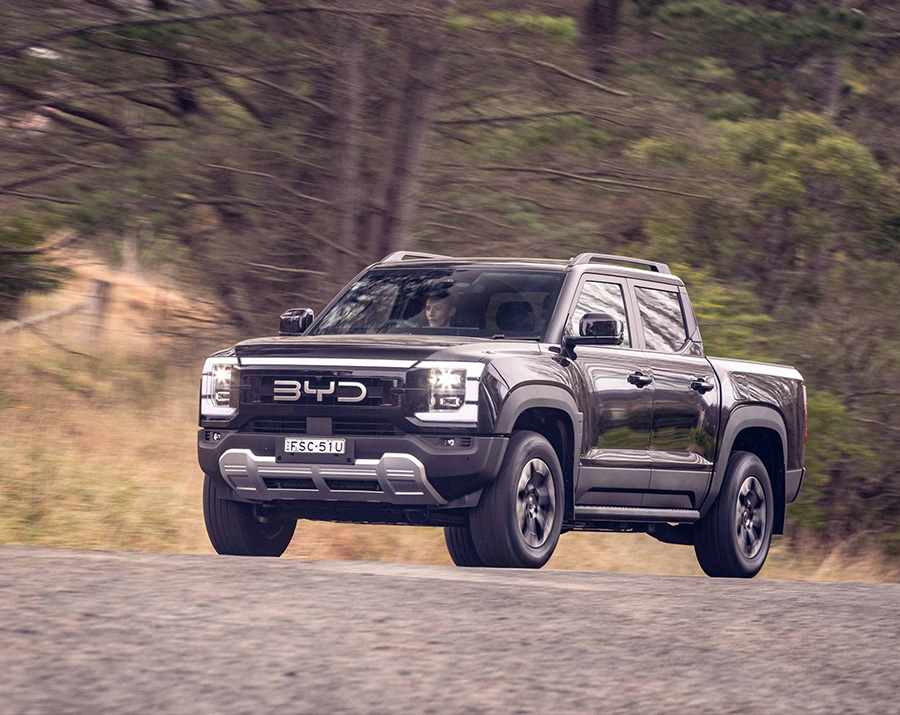
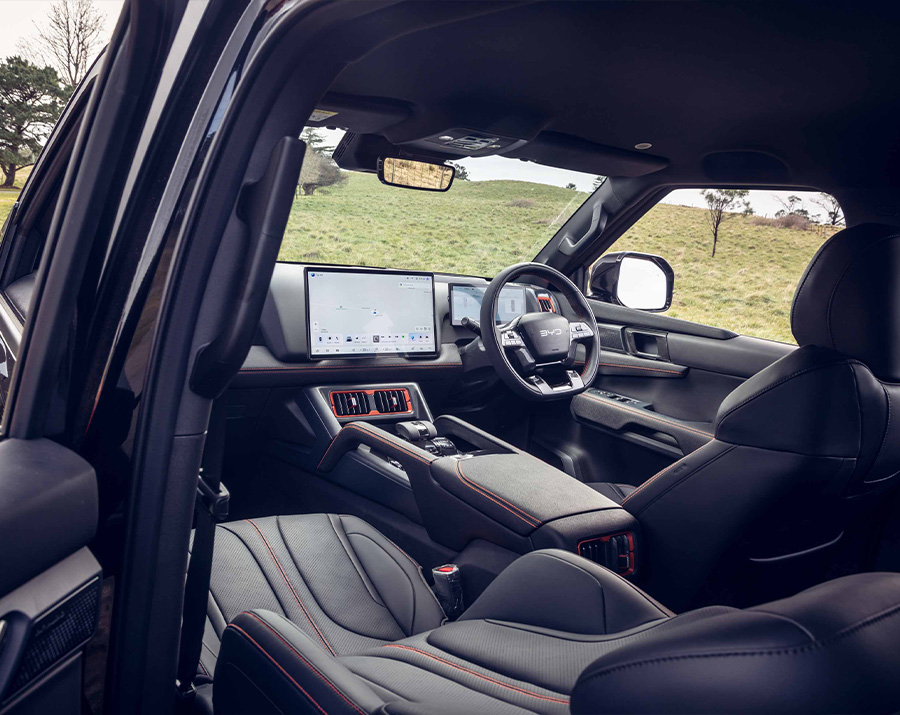

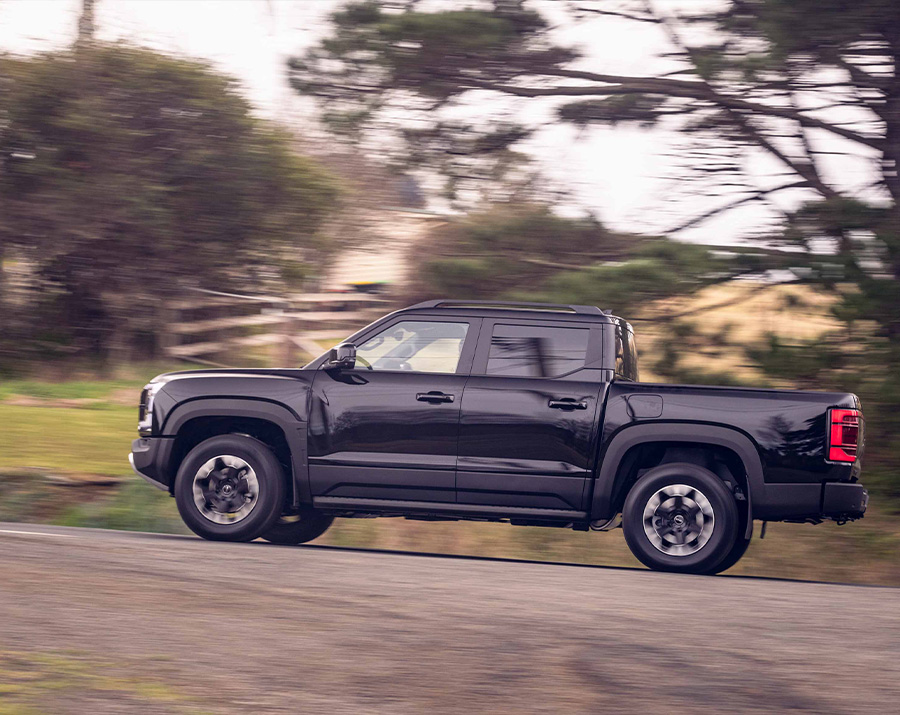
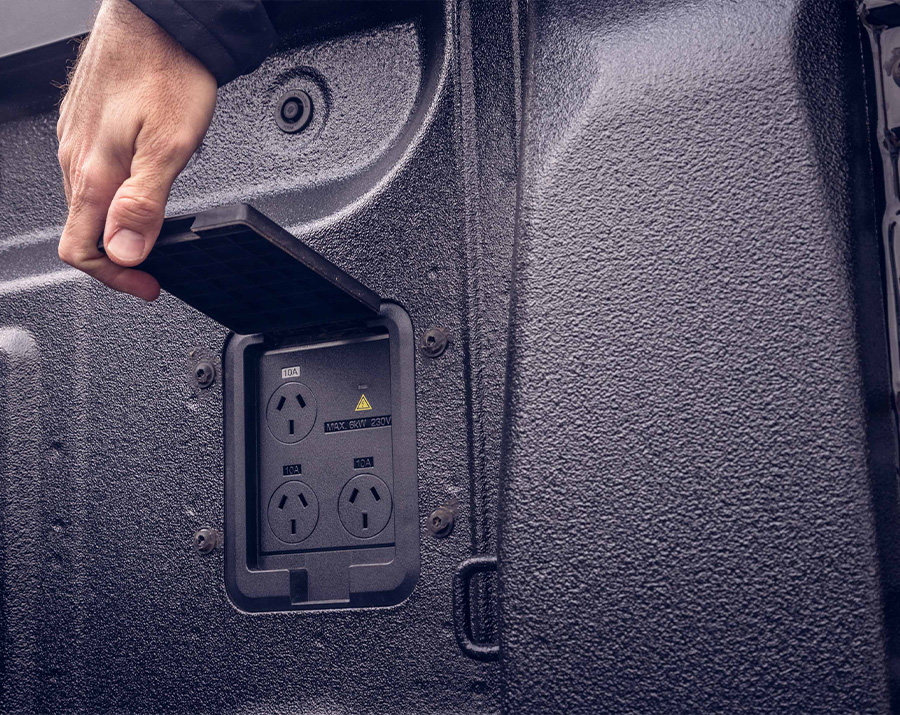
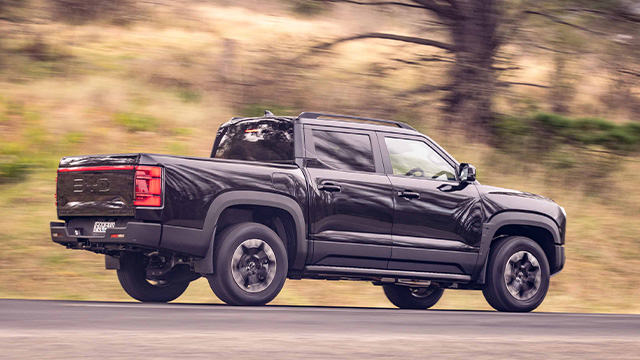

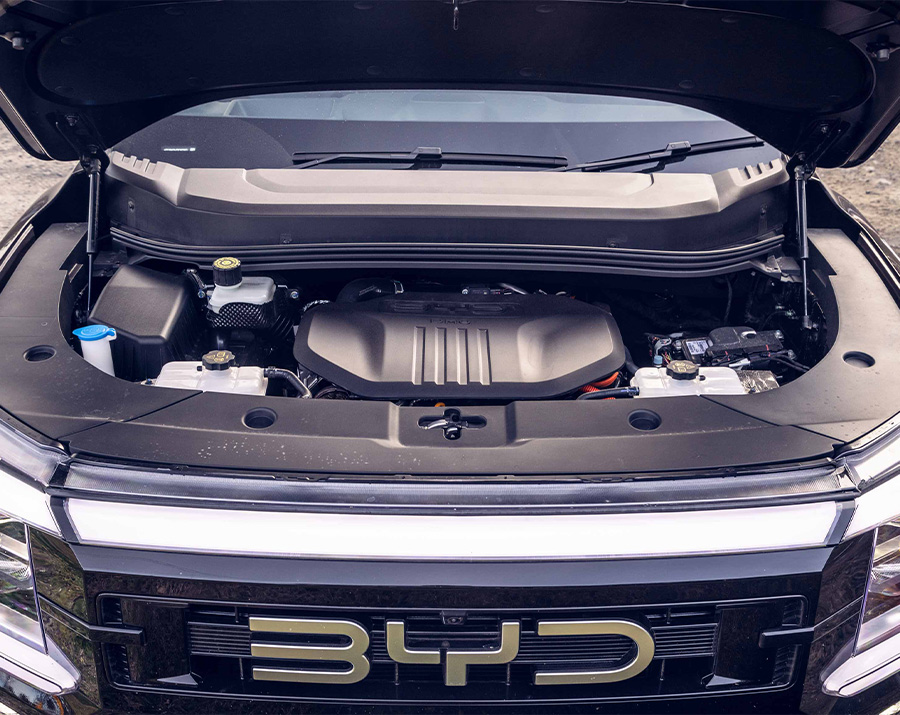
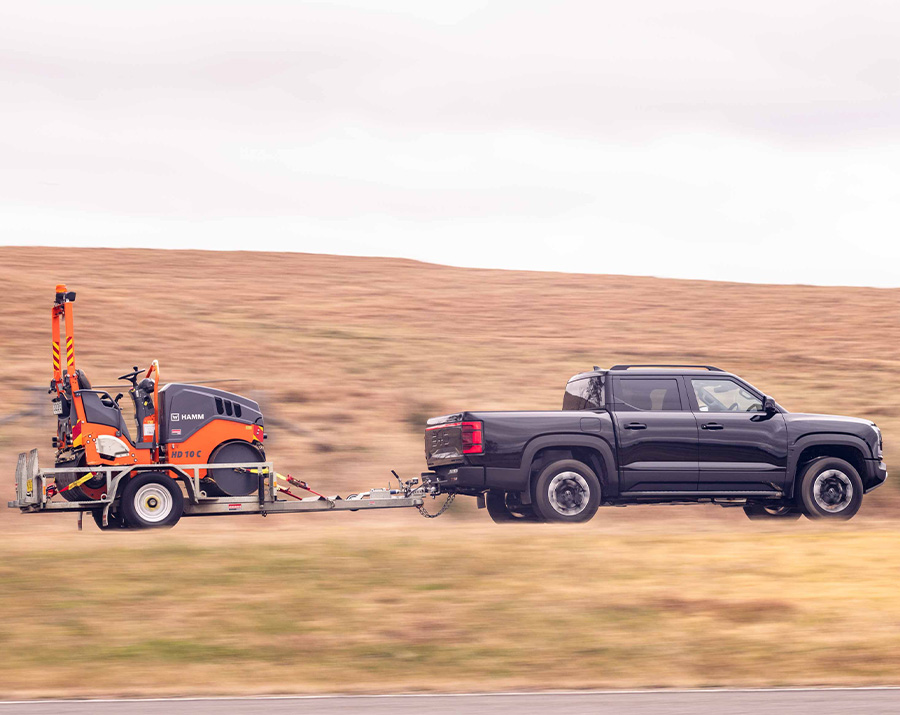
Almost 12 months on from its introduction in Australia, the BYD Shark still reads like the veritable poster child of the PHEV segment. It is the fastest dual cab ute in a straight line (0-100km/h in a claimed 5.7 seconds) and offers the fastest recharging rates (55kW DC, 7kW AC) of the PHEV hay hauler class, yet it makes do with a lower towing capacity and pseudo all-wheel drive system, where the respective axles don’t have any physical link.
Power comes from the combination of a 1.5-litre turbo-petrol four-cylinder engine, teamed with individual electric motors on the front and rear axle. All told, combined power is rated at 321kW, while torque totals to 650Nm.
Claimed electric range is 80km (recently revised down from 100km) from the 29.6kWh battery, which is at the upper end of the segment, albeit not as strong as the GWM Cannon Alpha.
Of course, all this hardware isn’t light: the Shark 6 tips the scales at a hefty 2710kg, while its turning circle is 13.5 metres.
The official braked towing capacity is 2500kg, while payload is rated at 790kg – both well down on the 3500kg/one-tonne payload of most rivals.
Like a shiny new toy that has just been pulled out of the box, the BYD tends to initially enamour with its on-road skillset: smooth acceleration as the electric motor manages the heavy lifting, a quiet, seamless cabin environment, and light controls.
It feels very pleasant and planted for a dual-cab ute – at least if you were to use the typical lap of the dealership block as a gauge. Immediate steering and hushed cabin acoustics make a fine first impression.
Rougher roads tend to expose a less favourable side, including a more jittery ride and ‘tremoring’ that commonly afflicts dual-cab utes. It’s not disconcertingly bad, but it’s not Ford Ranger or Kia Tasman good, either. All in all, we’d argue middle of the class.
During an 80km efficiency run, the BYD average 10.37L/100km while running in its default setting, which proves its 2.0L/100km claim is purely academic and depends on driving conditions and how much charge it has on hand. In other situations, we saw a fuel reading much closer to 5.0L/100km, but this was prone to fluctuation.
Closer inspection reveals some other holes in the BYD’s on-road experience. Despite its fitment of independent coil-sprung suspension all-round, the Shark 6 still rides much like a leaf-sprung ute – and that’s despite the fact it won’t carry or tow as much as a leaf-sprung equivalent.
With a 2.2-tonne trailer in tow, those traits are exacerbated. Initially, the immediacy of the drivetrain is superlative, with the Shark offering seamless propulsion from a standstill thanks to its electrified drivetrain and making light work of the transition to highway speed.
An extended stint towing reveals a less redeeming side. With the Shark 6 determined to maintain 70 per cent charge battery, the drivetrain defers to an annoying high-pitched petrol resonance through the cabin at highway speeds. Not surprisingly, fuel use at this point isn’t a highlight, spiking to 18.4L/100km on test. Otherwise, stability is middle of the road, with the steering becoming noticeably lighter and the rear of the ute occasionally prone to a misstep or two.
Off-road, the BYD struggles on anything with moguls or articulation. The lack of a mechanical link between the front and rear axles becomes clear as its eco-friendly tyres scramble for traction, and the coil sprung rear end struggles to get power down. It means a straightforward ascent on test results in spinning tyres, stalled movement, and bailing out on the exercise altogether.
The BYD Shark 6 has quickly become the poster child of the bourgeoning PHEV ute segment, and deservedly so. Its appeal as a lifestyle ute, with great useable tech and an impressive electrified drivetrain, is unquestionable.
As a tool of trade, or even a recreational vehicle with the occasional spot of heavier towing and off-roading, however, the BYD begins to jump the shark – something prospective buyers should consider at the time of purchase.
What we liked
What could be better?